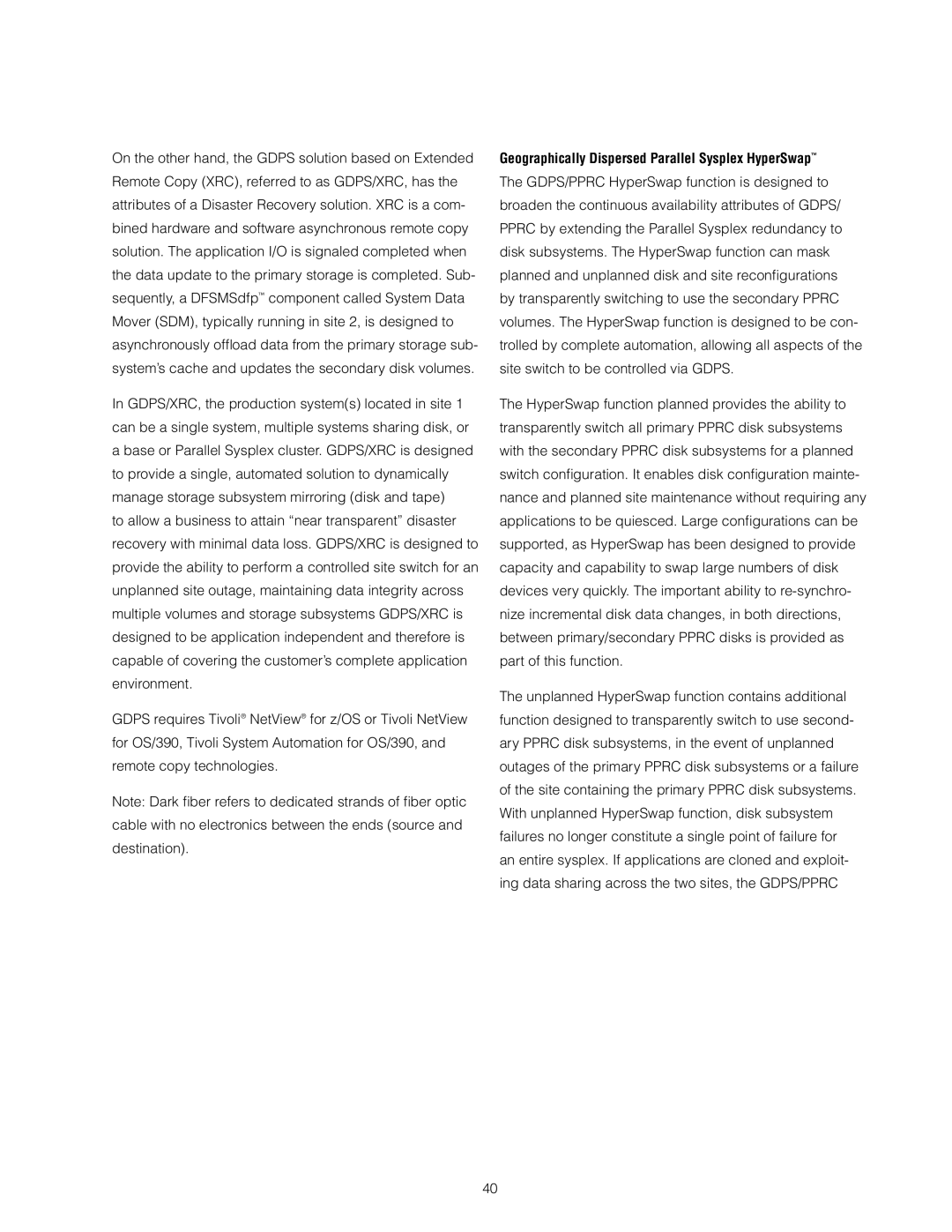On the other hand, the GDPS solution based on Extended Remote Copy (XRC), referred to as GDPS/XRC, has the attributes of a Disaster Recovery solution. XRC is a com- bined hardware and software asynchronous remote copy solution. The application I/O is signaled completed when the data update to the primary storage is completed. Sub- sequently, a DFSMSdfp™ component called System Data Mover (SDM), typically running in site 2, is designed to asynchronously offl oad data from the primary storage sub- system’s cache and updates the secondary disk volumes.
In GDPS/XRC, the production system(s) located in site 1 can be a single system, multiple systems sharing disk, or a base or Parallel Sysplex cluster. GDPS/XRC is designed to provide a single, automated solution to dynamically manage storage subsystem mirroring (disk and tape)
to allow a business to attain “near transparent” disaster recovery with minimal data loss. GDPS/XRC is designed to provide the ability to perform a controlled site switch for an unplanned site outage, maintaining data integrity across multiple volumes and storage subsystems GDPS/XRC is designed to be application independent and therefore is capable of covering the customer’s complete application environment.
GDPS requires Tivoli® NetView® for z/OS or Tivoli NetView for OS/390, Tivoli System Automation for OS/390, and remote copy technologies.
Note: Dark fi ber refers to dedicated strands of fi ber optic cable with no electronics between the ends (source and destination).
Geographically Dispersed Parallel Sysplex HyperSwap™
The GDPS/PPRC HyperSwap function is designed to broaden the continuous availability attributes of GDPS/ PPRC by extending the Parallel Sysplex redundancy to disk subsystems. The HyperSwap function can mask planned and unplanned disk and site reconfi gurations by transparently switching to use the secondary PPRC volumes. The HyperSwap function is designed to be con- trolled by complete automation, allowing all aspects of the site switch to be controlled via GDPS.
The HyperSwap function planned provides the ability to transparently switch all primary PPRC disk subsystems with the secondary PPRC disk subsystems for a planned switch confi guration. It enables disk confi guration mainte- nance and planned site maintenance without requiring any applications to be quiesced. Large confi gurations can be supported, as HyperSwap has been designed to provide capacity and capability to swap large numbers of disk devices very quickly. The important ability to
The unplanned HyperSwap function contains additional function designed to transparently switch to use second- ary PPRC disk subsystems, in the event of unplanned outages of the primary PPRC disk subsystems or a failure of the site containing the primary PPRC disk subsystems. With unplanned HyperSwap function, disk subsystem failures no longer constitute a single point of failure for an entire sysplex. If applications are cloned and exploit- ing data sharing across the two sites, the GDPS/PPRC
40
